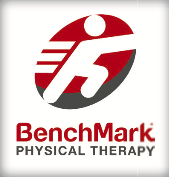Improving Your Golf Swing with Physical Therapy

 Distance. Accuracy. Consistency.
Distance. Accuracy. Consistency.
Those are goals that every golfer strives to achieve, yet so often, seem unattainable.
The average golfer is inundated with advertisements and commercials for new swing aids that guarantee improved distance, accuracy, and consistency. But all too often, these products collect dust in a golfer’s closet.
Why? Because it’s neither the club that makes the movements nor the swing aid that controls the club. It’s the human body that performs the work.
In an average 18-hole round of golf, a player using a cart may walk 1.5 to 2.5 miles and burn 800 calories; a player walking all 18 holes may cover 5 to 6 miles and burn 1,400 calories (Golf Digest, 2012). Couple this with swinging a golf club 300 or more times (practice swings included) at an amateur’s average speed of 94 mph, and the game can take a toll on the body.
The golf swing, lasting approximately a half-second, results from 3D, sequential movements of the body. If timing is off, even by a fraction of a second, it can mean the difference between birdie and bogey. Through 3D analysis of the golf swing, physical therapists can identify three areas of kinematic sequencing that most affect the swing: hips/ pelvis, spine/thorax, and shoulders/arms (Greg A. Rose, 2013). Just one bodily restriction or dysfunction along this kinetic chain can cause major swing flaws that will limit distance, accuracy, and consistency.
The problem could be related to mobility (movement of the joints), strength, flexibility, coordination or some combination of the four. To discover the underlying physical restriction that plagues their swings, golfers often seek the help of physical therapists, specifically ones who are certified golf fitness professionals.
An appointment with one of BenchMark’s skilled physical therapists will include a head-to-toe evaluation to identify weaknesses and to design a customized exercise program to that golfer’s needs.
Here are some examples of what that program can include:
- Strengthening exercises to increase power and endurance.
- Dynamic strengthening and agility exercises to improve explosive power.
- Flexibility and mobility exercises to enhance accuracy and consistency.
- Cardiovascular exercises to increase endurance for a four- to five-hour round of golf.
Consider a golfer who can’t rotate his/her hips inward (hip internal rotation). This will cause increased slide or sway (Greg A. Rose, 2012), causing the golfer to fade the golf ball (move left to right for a right-handed golfer), lose accuracy and distance. A physical therapist may prescribe hip mobility exercises to promote an increased range of motion and rotational strengthening/ coordination exercises kinematic sequencing backswing length.
If you are looking to better your golf game, we’re happy to help get you on the path to your best golf swing.
 BenchMark Physical Therapy is a family of physical therapists, occupational therapists, and hand therapists committed to inspiring and empowering people to reach their full potential. Its providers know that connecting with patients on a personal level helps to build trust. This trust is crucial in allowing patients and therapists to work together to make the best use of advanced certifications and re ned techniques. A focus on proven methods and a hands-on approach help the BenchMark team achieve the goals of the patient in a safe and effective manner.
BenchMark Physical Therapy is a family of physical therapists, occupational therapists, and hand therapists committed to inspiring and empowering people to reach their full potential. Its providers know that connecting with patients on a personal level helps to build trust. This trust is crucial in allowing patients and therapists to work together to make the best use of advanced certifications and re ned techniques. A focus on proven methods and a hands-on approach help the BenchMark team achieve the goals of the patient in a safe and effective manner.
BenchMark Physical Therapy • www.benchmarkpt.com • 1-844-264-5307



